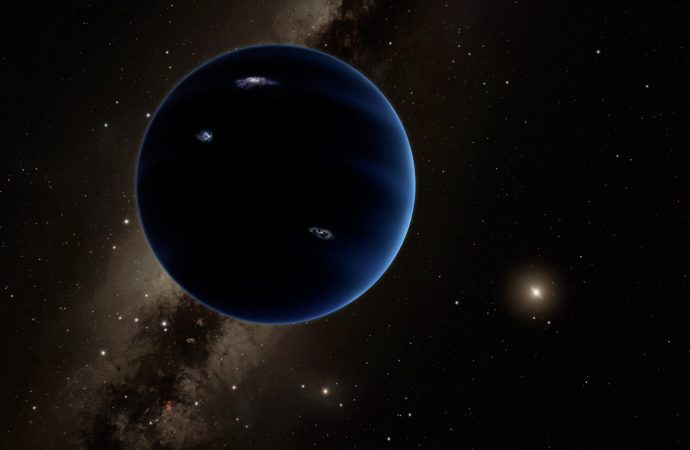At ten times the mass of Earth, at a distance 20 times farther from the Sun than Neptune, in a far-flung region filled with icy bodies known as the Kuiper belt, supposedly orbits the mysterious Planet X.
In 2016, excitement about the hypothesized planet ran high, when work by Konstantin Batygin and Mike Brown provided compelling evidence for the existence of X. They observed six trans-Neptunian objects (TNOs) tightly clustered in one region with tilted, stretched orbits that could be explained by something with a massive gravitational sway. Even the specific tilt of the Sun could be attributed to its existence. But after the latest Outer Solar Systems Origin Study (OSSOS) was released this week, things are looking dark for icy, distant X.

Brown and Batygin’s initial study relied on odd elliptical orbits of TNOs as evidence. One of the first indicators was Sedna, a TNO in the outer edges of the Kuiper belt first discovered in 2014 by Chad Trujillo of the Gemini Observatory and Scott Sheppard of the Carnegie Institute for Science.
James Romero of New Scientist describes evidence from trans-Neptunian objects below:
Earth and the other familiar planets all orbit the sun in roughly the same plane. But the smaller Kuiper belt objects [like Sedna] are far enough from the gravitational influence of the giant planets that they can orbit the sun at angles to this plane, nudged by their own gravitational interactions and past collisions.
It is possible to predict this angle, known as the inclination, for any object we observe. If those calculations don’t match the real path of the objects, it hints there is something lurking out of sight, tugging on the bodies we can see.

Now, a team led by Cory Shankman of the University of Victoria and Kathryn Volk of the University of Arizona have found conflicting results. As part of OSSOS, the team explored 800 TNOs by examining eight separate areas over four years. Out of these, eight objects showed wonky orbitals that were particularly similar to those noticed by Trujillo, Sheppard, Brown, and Batygin.
But the evidence of clustering was slim. Instead, the study revealed a bias in the small sample in the initial Brown and Batygin study. The initial data collection may have been heavily influenced by factors such as weather, poor atmospheric visibility, or where the telescope was pointed.
In the study released this week, Shankman and the team report:
We have shown that there are strong and striking biases in the detection of the orbital angles present in OSSOS. There is no evidence for clustering in the OSSOS sample when considered alone…. The first large independent sample shows no evidence for the hypothesized intrinsic clustering. While the idea of there being a larger-than-dwarf-scale planet in the outer solar system… is still plausible, the evidence that there is currently a super-Earth or larger planet confining the … TNOs is in doubt.
Supporters of Planet X are still convinced of its existence, though. Brown released his own update on June 13, stating that “While observational bias is clearly present in these observations, it is unlikely to explain the observed alignment of the distant eccentric Kuiper belt objects.”
Everything about this potential planet remains mysterious, from its official number—is it ten, reminiscent of its name, or nine since Pluto was demoted?—to its contentious existence. Astronomers have yet to directly view the planet, though it is conceivably within the range of the eight-meter Subaru telescope in Hawaii.
For now, the jury’s still out on Planet X, but we’re inching closer to finding the true number of planets in our solar system.
Source: PBS.org

































Leave a Comment
You must be logged in to post a comment.